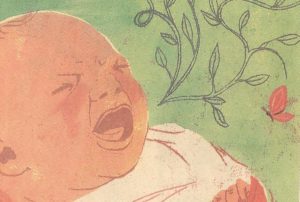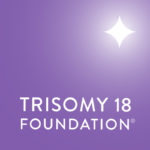
As soon as I heard the piercing scream, I knew everything would be fine.
As soon as I heard Katie’s shrill cry, her vocal protest at being pulled from the dark warmth of the womb to the bright, chilly operating room, I knew everything would be wonderfully, gloriously fine.
It wasn’t this way last time.
************************
NOTE: This first-person essay appeared in the Baltimore Sun on March 18, 2007.
As soon as I heard the piercing scream, I knew everything would be fine.
As soon as I heard Katie’s shrill cry, her vocal protest at being pulled from the dark warmth of the womb to the chilly glare of a Johns Hopkins Hospital operating room, I knew everything would be wonderfully, gloriously fine.
It wasn’t this way last time.
About 18 months earlier, my wife and I had been in a room similar to this one as our son, Christopher, was born. But there was no healthy cry. Christopher had been diagnosed in utero with trisomy 18, a genetic disorder caused by the presence of an extra copy of the No. 18 chromosome. This leads to major developmental problems, and the lives of children with trisomy 18 are often measured in hours and days rather than years. Only 10 percent live to the age of 1.
When he was born in April 2005, Christopher offered only a feeble whimper, the most his weak body could muster. He died 10 hours later.
My wife, Jeanne, and I both are products of Catholic families of a generation ago (read: lots of kids). We had married in our 30s, and Jeanne had given birth to a healthy boy, our son Matt, in 2001. We knew time and biology weren’t going to allow us a large family, but we never envisioned having an only child, either.
But after Christopher died, we also knew that trying to have another child would mean moving past our grief, relying on our faith and confronting our fear that this could happen all over again.
The truth is, it wasn’t likely. Trisomy 18 occurs only once in every 3,000 live births, and having one trisomy 18 baby doesn’t increase the likelihood of having another.
Anxiety and fear were constant companions on the nine-month journey to Katie’s birth. Friends offered congratulations on the pregnancy, but privately I knew there was nothing to celebrate just yet.
That fact buoyed me, as did something one of my brothers said several years ago.
He had survived a single-engine plane crash, and I asked him a few years later if he was afraid to fly. “Not at all,” he replied. “How many people do you know (who) have been in two plane crashes?”
In other words, his number had already been called.
So, too, I told myself, had ours. We had basically hit a 3,000-to-1 shot with Christopher. What were the odds of doing it again?
Still, anxiety and fear were constant companions on the nine-month journey to Katie’s birth. Friends offered congratulations on the pregnancy, but privately I knew there was nothing to celebrate just yet.
As we arrived at Hopkins this past November on the morning of Jeanne’s scheduled Cesarean section, my mind repeatedly raced back to 18 months earlier when Christopher had died. Walking along the ground-floor hallway near the main entrance of the hospital, I spotted the small courtyard where I had broken the news to Matt, then 3 1/2, that his brother died. (“Now?” he asked through tears. “But I want him to grow up and eat baby food.”)
Jeanne and I made our way to the Johns Hopkins Birthing Center on the second floor. A sign pointed the way toward the genetic counseling office where, in November 2004, a counselor had explained that blood tests indicated the baby Jeanne was carrying was at an elevated risk for trisomy 18. Of course, “elevated” was not “certain,” and we tried to convince ourselves that the testing was incorrect, that the lab had made a mistake, that this wouldn’t, it couldn’t happen to us.
As Jeanne filled out her admission paperwork, I saw the hallway leading toward ultrasound, where we had gone directly from the genetic counselor’s office that November day. And I recalled the grim-faced radiologist sitting down after the extensive exam and saying words I will never forget: “There are some findings that are troubling.”
Over the next few minutes, he relayed what we now know to be telltale markers of trisomy 18 — choroid plexus cysts on the brain, a malformed “horseshoe” kidney, a club foot — each one coming like a blow to the midsection. By the time he was finished, I felt like I could hardly breathe.
During Jeanne’s latest pregnancy, moving past our fear meant returning to that ultrasound department. My nerves were as tight as guitar strings during the exam, and I scanned the fuzzy images, looking for what, exactly, I did not know.
I could barely distinguish the head, let alone any choroid plexus cyst that might be present. But I could make out the hands, and … they moved! Christopher’s hands had been tightly clenched and had never moved. It was the first tangible sign that this time might be different.
The next didn’t come until we were in that operating room on Nov. 1, 2006, when Katie entered this world with a wail.
As Jeanne and Katie rested in the recovery room a few hours later, I went to see “The Divine Healer,” the 10 1/2-foot-tall marble statue of Jesus under the dome of the Billings Administration Building. Like thousands of others who have passed through Hopkins, I had visited the statue in my time of need and grief 18 months earlier, and now I was moved to visit it again.
When I returned to the recovery room, Katie was crying, and Jeanne, tired and sore, was trying to soothe her. But at that moment, in that room, that cry was the most wonderful sound in the world.
************************************
For more information and to support Trisomy-18 research, please see www.trisomy18.org
